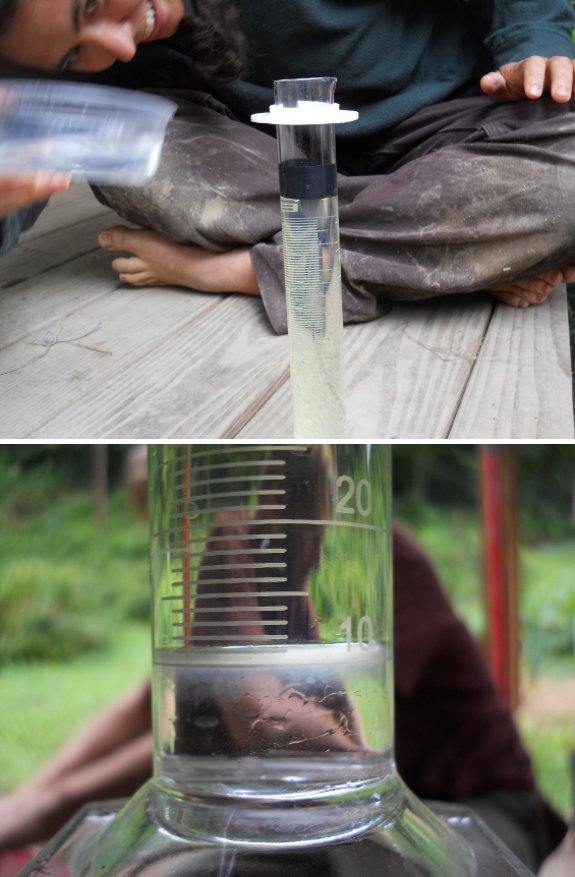
Graduated cylinder fuel test

We got this 100
mL graduated cylinder on
Amazon for 12 dollars to do some fuel testing.
Anna has some lab experience
and talked me into the glass model for twice the money.
The first test was done on
some premium fuel I got at the Food City in St Paul.
Food City uses Ethanol like
everybody else and the results showed the advertised 10%, but that was
just to get us accustomed to the procedure. We plan to do the next test
on some so called "Ethanol Free" fuel that a few stations around here
claim to sell.
Want more in-depth information? Browse through our books.
Or explore more posts by date or by subject.
About us: Anna Hess and Mark Hamilton spent over a decade living self-sufficiently in the mountains of Virginia before moving north to start over from scratch in the foothills of Ohio. They've experimented with permaculture, no-till gardening, trailersteading, home-based microbusinesses and much more, writing about their adventures in both blogs and books.
Want to be notified when new comments are posted on this page? Click on the RSS button after you add a comment to subscribe to the comment feed, or simply check the box beside "email replies to me" while writing your comment.

When you have poured in the water and the fuel, don't forget to shake the contents (so that the water can pick up the ethanol) thoroughly before allowing the water/ethanol mix to separate.
On a larger scale this method might be used to remove the ethanol from the fuel; Take a jerrycan and add a spigot to one of the sides close to the bottom. Fill the jerrycan 80% with fuel. Add 10% water and shake. Then allow the water/alcohol mix to settle on the bottom. Use the spigot to drain all the water. You should now have fuel with a lot less alcohol in it.
The problem of course is what to do with the remaining water/ethanol mix. It might very well be contaminated with methanol (on purpose).
Just pour it on the ground. Way too much is made of petroleum "contamination." It's ORGANIC. The soil bacteria will take care of any hydrocarbon that is not readily volatolized into the air.
"Decontaminating" soil that has been exposed to leaking oil/fuel tanks is a giant scam. They excavate the area and carry away the soil. (Where do they put that? Isn't the dump site then contaminated too and just as liable to spoil the ground water?)
And then they plant a pipe that supposedly allows the remaining petroleum product to volatolize to the atmosphere. Yea, right.
The treatment for a patient who ingests straight gasoline? Nothing. It'll give you diarrhea for a while. Just don't vomit while your stomach is full of it-- if you inhale it, it could cause lipoid pneumonia.
The concentration of a liquid pored into the ground will diminish by the distance cubed from the source: you won't be able to measure the product even a few feet from ground zero after a while.
@doc: Interesting! I hadn't thought about that, but it makes sense.
Anna: there is actually evidence to support that. See e.g. Biodegradation of hydrocarbons in the environment or Oil degradation in soil.